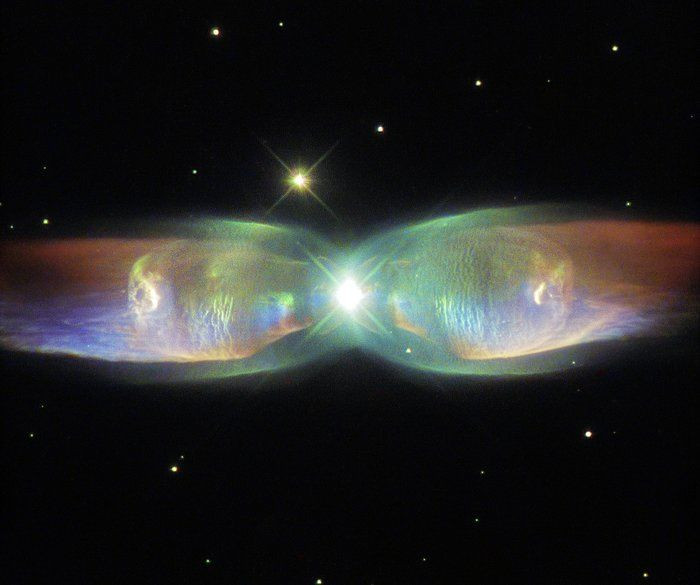Hubble Spots Stunning Nebula Made By Dead And Dying Stars

KEY POINTS
- ESA shared a photo of a nebula captured by the Hubble Space Telescope
- PN M2-9 is a nebula formed by a binary star system
- The interactions of a red giant and white dwarf formed the nebula's shape
The European Space Agency (ESA) shared a photo of a striking nebula that was previously captured by the Hubble Space Telescope. The nebula’s unique appearance was caused by the interactions between a dying star and a white dwarf.
The cosmic object in the photo has been identified as PN M2-9, which is also known as the Twin Jet Nebula. It is located in the constellation Ophiuchus and is about 2,100 light-years from Earth.
As a nebula, PN M2-9 was initially formed by the expanding ionized gas escaping from the body of a red giant, which is a dying star that is nearing the end of its life cycle. As the red giant emits hot gas into its surroundings, it creates a glowing shell around it.
Compared to other nebulae, PN M2-9 has a very distinct shape. As its name suggests, the nebula has twin jets of cosmic material emanating from its central region. According to NASA, which operates Hubble alongside the ESA, PN M2-9 was formed by a binary star system.
“Ordinary planetary nebulae have one star at their center, bipolar nebulae have two, in a binary star system,” NASA explained. “Astronomers have found that the two stars in this pair each have around the same mass as the sun, ranging from 0.6 to 1.0 solar masses for the smaller star, and from 1.0 to 1.4 solar masses for its larger companion.”
NASA noted that there are currently two stars orbiting one another in the nebula’s central region. The first one is a red giant while the other one is already a white dwarf, which is the remnant core of a dead star.
Scientists believe that as the red giant and white dwarf orbit one another, the ionized gas escaping from the former gets pulled into different directions. Instead of forming a central shell around the stars, the gas turns into wing-like structures on different sides of the nebula.
“It is believed that as the dying star and white dwarf orbit around their common center of mass, the ejected gas from the dying star is pulled into two lobes rather than expanding as a uniform sphere,” NASA stated.
© Copyright IBTimes 2025. All rights reserved.





















